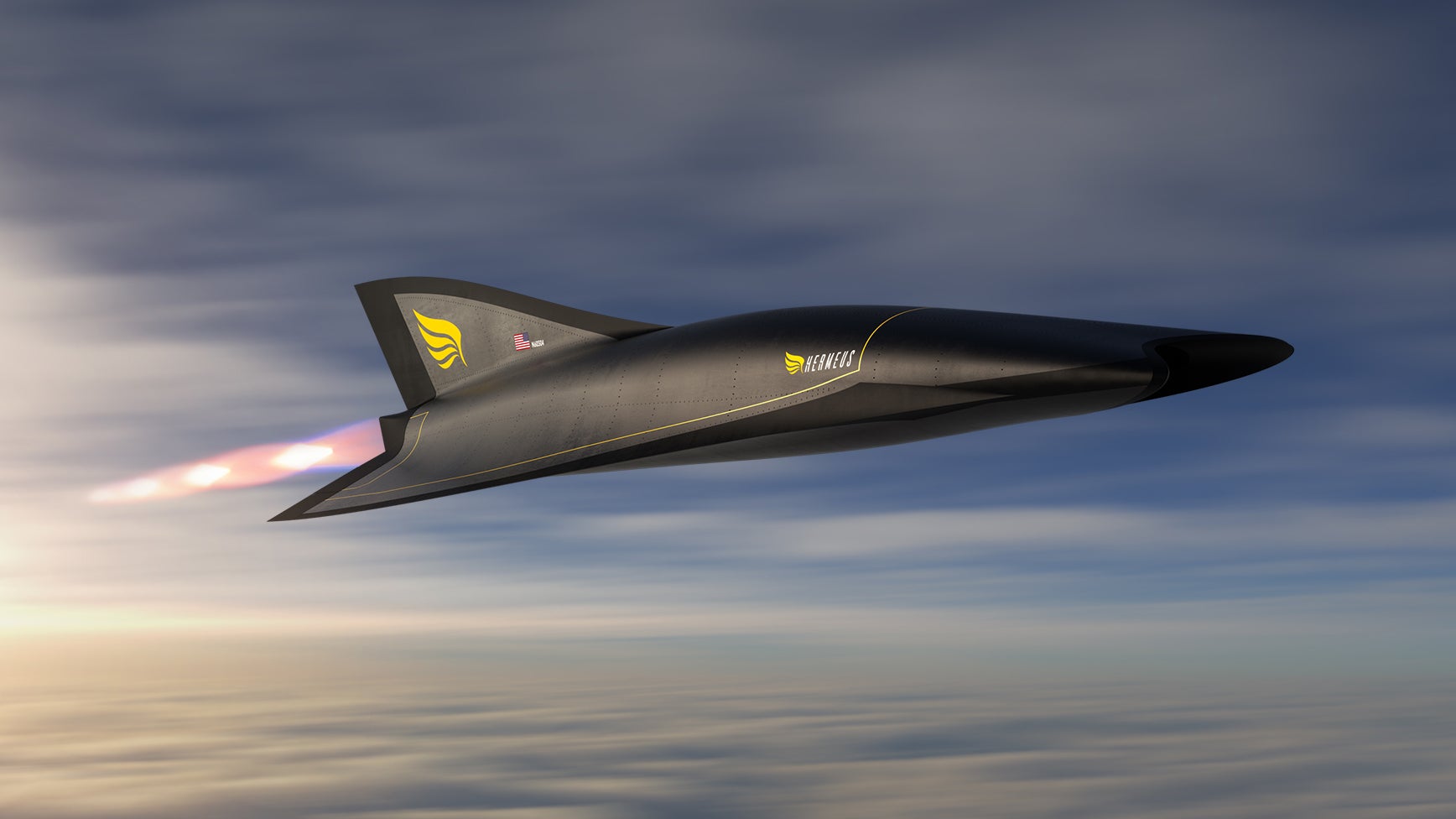The U.S. Air Force has teamed up with venture capital firms to award a $60-million contract to Hermeus Corporation which should secure the flight testing phase of the company’s first reusable hypersonic aircraft, named Quarterhorse. This is the first of a planned family of high-speed aircraft from the startup. Although primarily aimed at commercial markets, the Air Force is eyeing the same technology for a future high-speed presidential transport, and potentially other applications, too.
Hermeus announced today that it had secured the funding required for the Quarterhorse’s flight test program, which it says will provide “the fastest reusable aircraft in the world,” as well as the first to fly using a turbine-based combined cycle (TBCC) engine. The contract was awarded July 30 and is reportedly one of the most valuable ever of its type to be awarded to a startup.
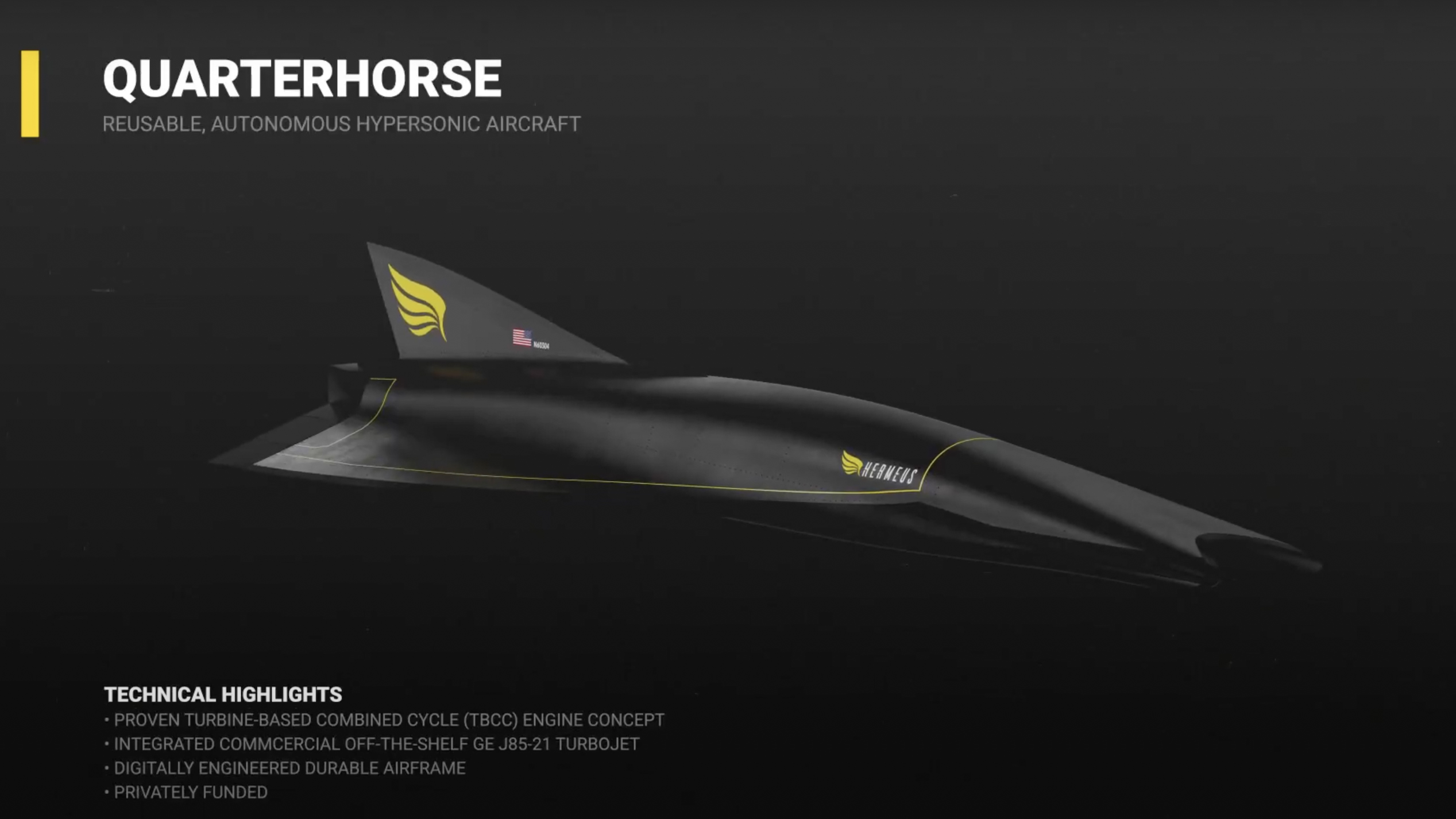
The TBCC powerplant is central to the company’s ambitions and its potential has alerted the Air Force. Essentially, a TBCC engine combines a high-speed ramjet or scramjet with a regular jet turbine to ensure the aircraft can also function at lower speeds. The advantage of this propulsion arrangement is that the aircraft is able to take off like any other jet, using existing infrastructure, accelerate to high supersonic or hypersonic speeds for the cruise portion of its flight, and then decelerate back down to land at its destination, again as normal.

The company’s TBCC powerplant will include a General Electric J85 turbojet engine, as used in the T-38 Talon jet trainer, and will be validated in the Quarterhorse aircraft, three of which are planned. These unmanned test aircraft will be around 40 feet long with a 10-foot wingspan. A first test flight is expected in only around 18 months.
According to the terms of the Air Force contract, Hermeus is required to flight test a reusable hypersonic propulsion system and then develop, build and test the three Quarterhorse concept aircraft, all over a three-year period. Further, the company is to “provide a payload integration guide for future hypersonic flight testing with Quarterhorse” and deliver “wargaming inputs for use in Air Force strategic analysis tools.”
“When it comes to technology, we often hear the term ‘game-changing,’” said Major General Heather Pringle, commander of the Air Force Research Laboratory, in a press release from the service. “However, hypersonic aircraft and propulsion systems are truly game-changing and will revolutionize how we travel, just as automobiles did in the last century. We are excited to be part of this effort, and to help propel this important technology.”
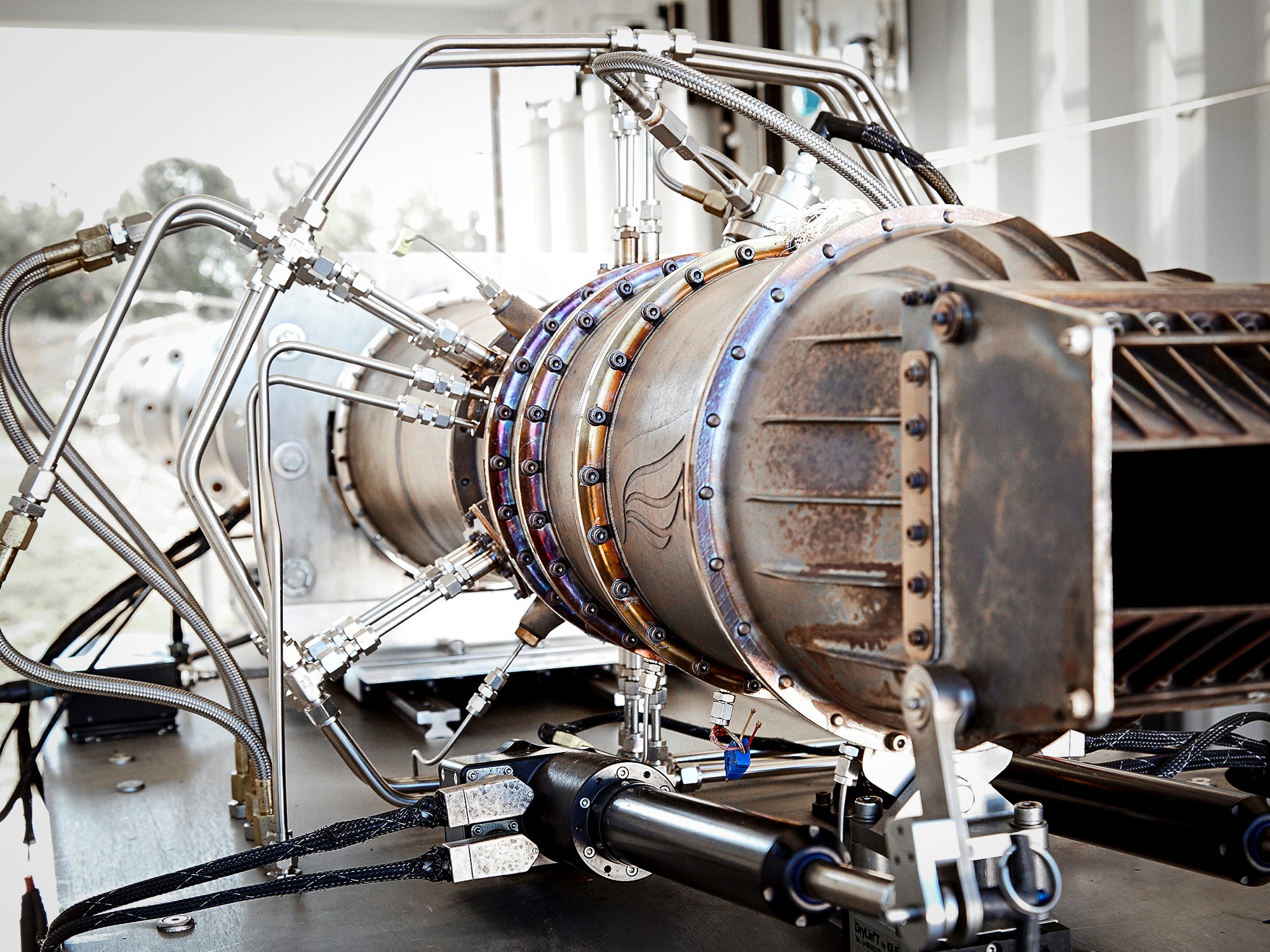
If successful, the Quarterhorse could provide “a stepping-stone to more intermediate products,” Skyler Shuford, one of the Hermeus founders and now its chief operating officer, told Defense One. Thereafter, the company hopes to embark on a larger passenger airliner, of the kind that could whisk paying passengers across the Atlantic or bring the President or high-ranking officials to meetings in potentially record time.
The contract award has been made as part of the AFWERX innovation initiative, a technology incubator the Air Force established in 2017 to leverage commercial technology for the benefit of the military. Specifically, the budget is made available via the Strategic Funding Increase (STRATFI) program led by the Air Force Life Cycle Management Center’s Presidential and Executive Airlift Directorate. The latter organization is, in turn, responsible for the acquisition and support of the Air Force’s current and next-generation VIP aircraft, including the next Air Force One. The Air Force Research Laboratory (AFRL) is also involved in funding the Hermeus contract.
The latest contract comes almost exactly a year after a previous Air Force Phase II SBIR contract, valued at $1.5 million, was awarded to Hermeus to continue its work on hypersonic travel after the company successfully tested a Mach-5 engine prototype in February 2020.
Both contracts are part of a wider effort led by the Presidential and Executive Airlift Directorate to “fuel the burgeoning commercial resurgence of high-speed passenger travel,” according to the Air Force, in what it describes as the Vector Initiative. As well as Hermeus, the Presidential and Executive Airlift team has partnered with Boom Supersonic and with Exosonic, with a view to looking into different possibilities for high-speed travel.
“Small business partnership is recognized by the U.S. Air Force as an important component to driving innovation,” said Lieutenant Colonel Joshua Burger, the Vector Initiative program manager. “Reducing risk in high-speed transport technologies, as we are doing with this contract, provides near-term and long-term benefits to both the U.S. Air Force and the defense industrial base. We are very excited to see Hermeus translate their demonstrated successes in engine prototyping into flight systems.”
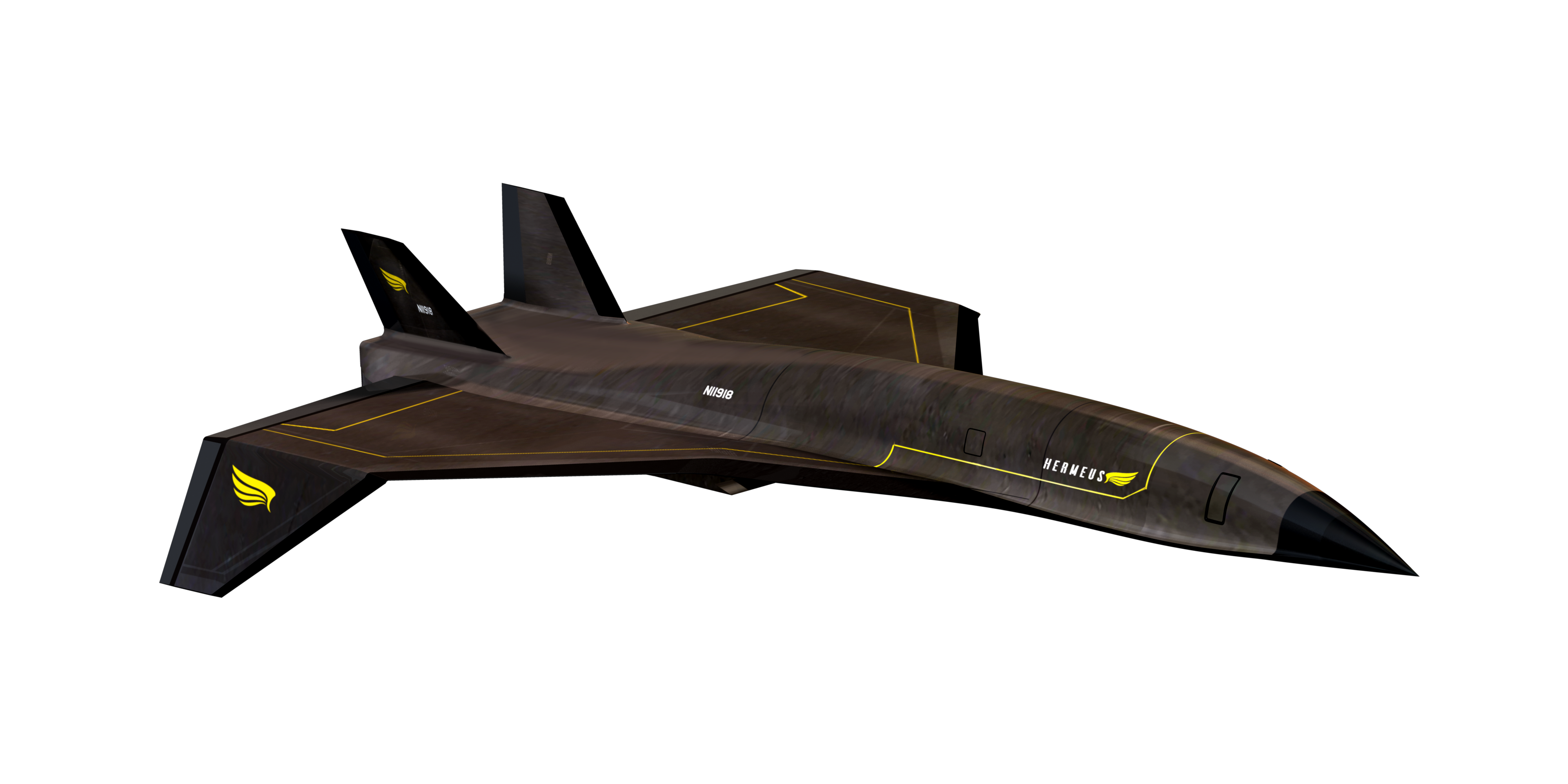
For its part, Hermeus says it’s confident that the relatively small sum of $60 million will be enough to flight test its TBCC engine “across the full flight envelope.” The firm says it will achieve this ambition by “leveraging autonomous and reusable systems, ruthlessly focused requirements, and a hardware-rich program,” but did not provide more details. Not only will the Quarterhorse be unmanned, but it seems at least some of the test specimens, or components of them, will be expected to be expendable, the company saying it will “push the envelope, sometimes strategically to the point of failure in flight test.”
Ultimately, the aim is to run a higher-risk test program that can be wrapped up quicker, reducing overall program costs.
Once the Quarterhorse aircraft have proved out the TBCC engine technology, the company hopes it will be able to further develop this for applications within both the commercial and military realms, or what the company calls the “dual-use space for hypersonic technology.” So far, Hermeus has talked of its ambition to fly a passenger aircraft from New York to London in just 90 minutes, flying at a speed of Mach 5, or roughly 3,000 miles per hour. Despite the promise of those rapid global connections, there is still the problem of sonic booms and the noise issue that saw a ban on commercial supersonic flight over landintroduced in the 1970s.
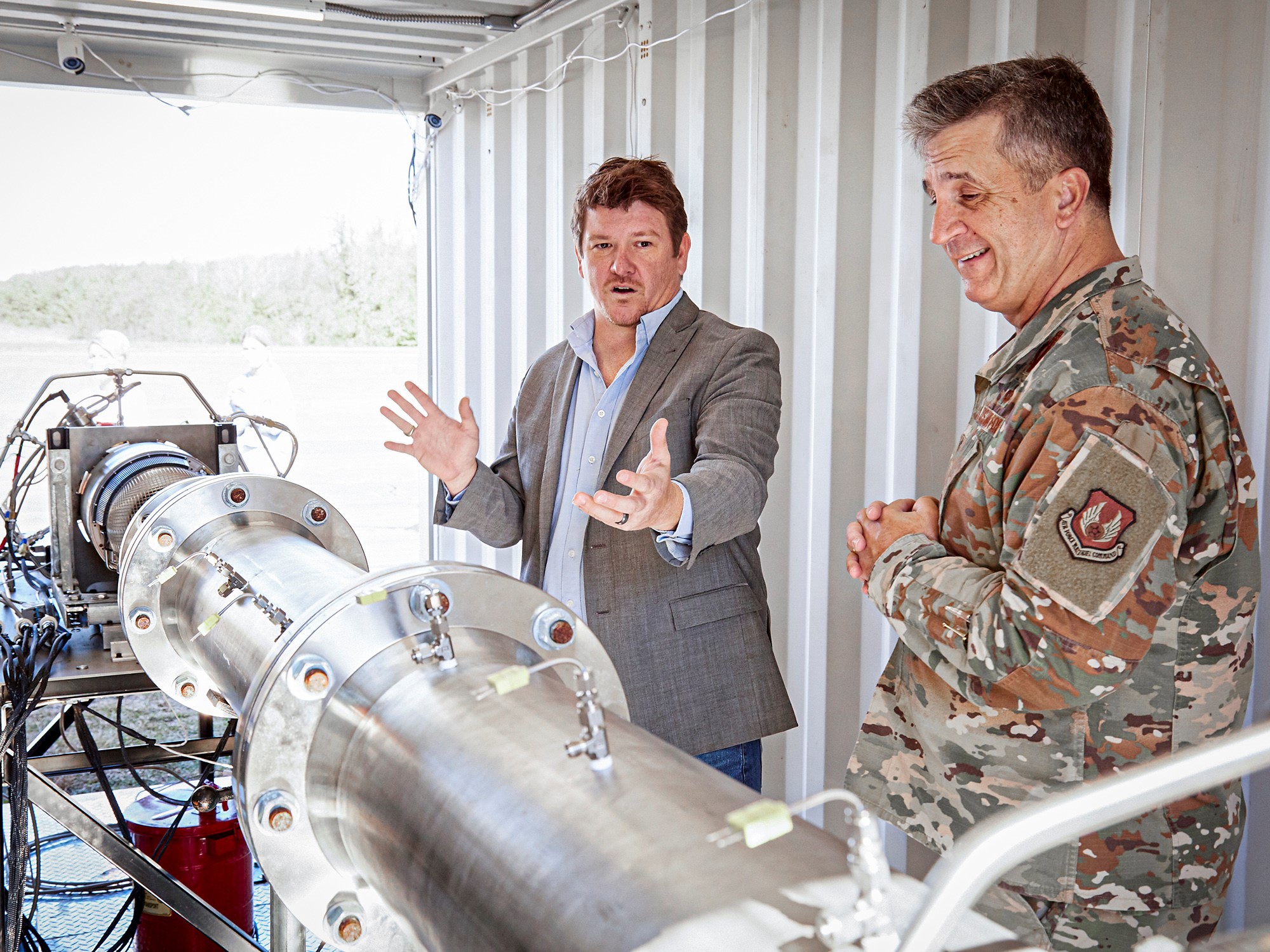
“While this partnership with the U.S. Air Force underscores U.S. Department of Defense interest in hypersonic aircraft, when paired with Hermeus’ partnership with NASA announced in February 2021, it is clear that there are both commercial and defense applications for what we’re building,” said Hermeus CEO and co-founder, AJ Piplica.
For the Air Force, while the Presidential and Executive Airlift mission is at the forefront of its stated interest in reusable hypersonic aircraft, there’s clearly also scope for the same technology, and in particular, the TBCC engines, to be used for other applications, too.

“Ultimately we want to have options within the commercial aircraft marketplace for platforms that can be modified for enduring Air Force missions such as senior leader transport, as well as mobility, ISR [intelligence, surveillance, and reconnaissance], and possibly other mission sets,” said Brigadier General Jason Lindsey, the Program Executive Officer for Presidential and Executive Airlift.
Tellingly, a slide from the company’s own presentation about the contract award mentions time-critical cargo and reconnaissance as possible missions for a planned “mid-size autonomous aircraft” that would follow the initial, small-scale demonstrators. The Pentagon has been increasingly looking at the challenge of delivering military cargoes to where they are required, much more rapidly, while a hypersonic reconnaissance aircraft is another topic that refuses to go away entirely.
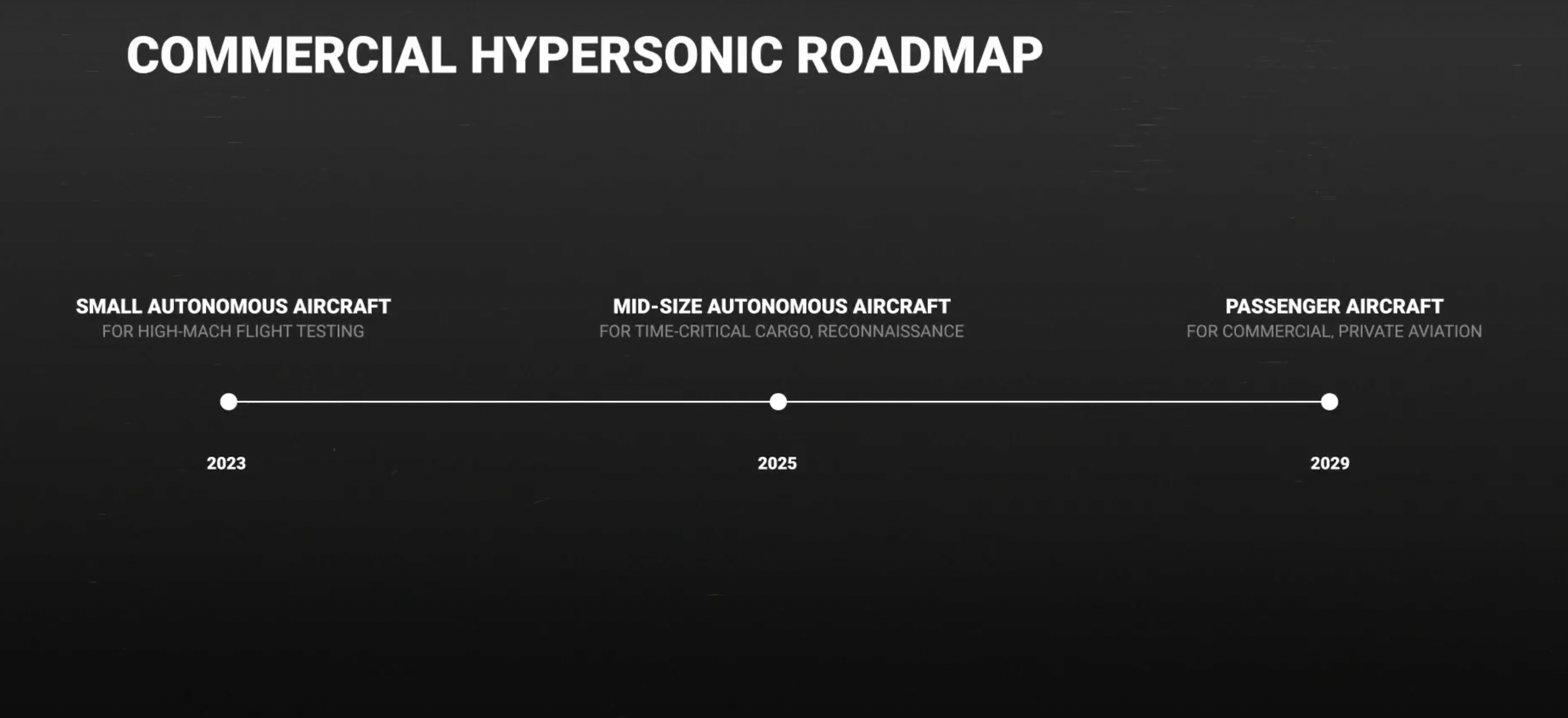
All that is a long way off, however, and Hermeus will first have to prove that its TBCC engine is indeed a suitable powerplant for a reusable hypersonic aircraft.
No doubt there are also significant challenges involved in maturing this technology, especially at the kind of price point that has been suggested for the initial development phase. In contrast, Lockheed Martin said it would cost around $1 billion to develop a fighter-sized combined-cycle demonstrator. Regardless, developing high-speed technologies, let alone hypersonic ones, traditionally requires considerable amounts of money.
Clearly, however, the Air Force has confidence in the proposals from Hermeus and it will be interesting to see the next developments in this cutting-edge program.
Contact the author: thomas@thedrive.com
